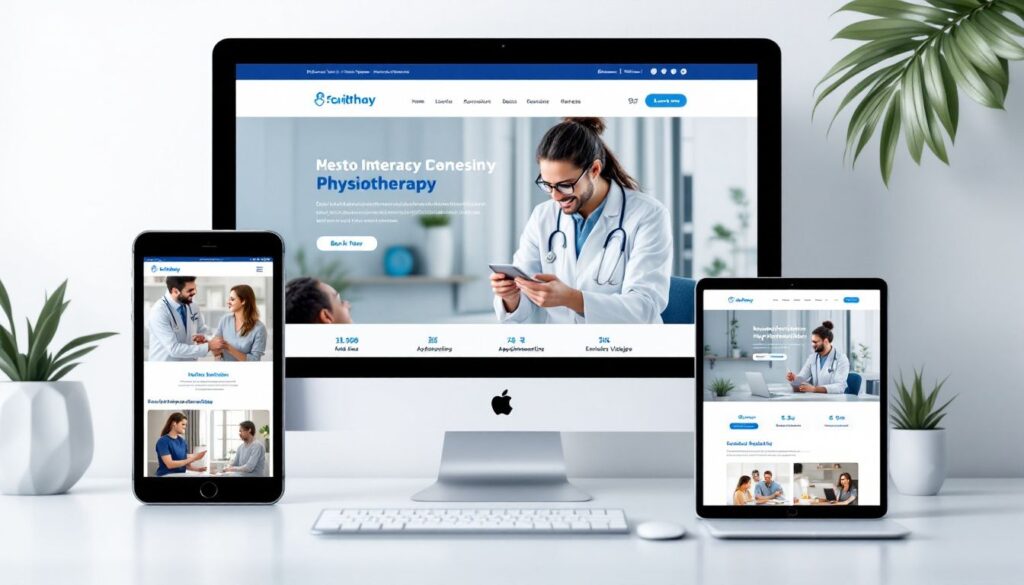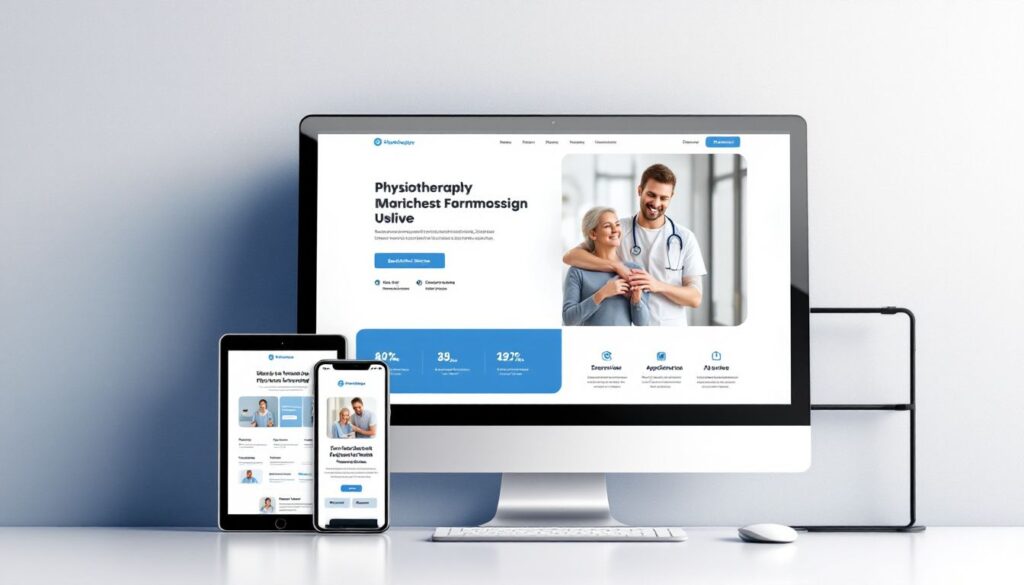
Rated Excellent by the Customers ★ ★ ★ ★ ★

Ultimate Guide: How to Create an Engaging Physiotherapy Website That Converts Patients (2025)
- February 4, 2025
In today’s digital age, your physiotherapy website is often the first point of contact between you and potential patients. According to recent healthcare marketing statistics, 80% of patients now research healthcare providers online before making appointments. As a physiotherapist, having an engaging, professional website isn’t just a nice-to-have – it’s essential for practice growth and patient retention.
Understanding Your Patient’s Digital Journey
When potential patients search for physiotherapy services, their journey typically begins online. According to Becker’s Hospital Review, 63% of patients choose healthcare providers based on their strong online presence. Your medical website engagement strategy should focus on creating a seamless user experience from the first click.
First Impressions and Navigation
Your website’s homepage should load in under 3 seconds, as recommended by Google’s PageSpeed Insights. Healthcare website optimization begins with clear navigation and intuitive design elements that guide patients to essential information.

Essential Website Elements for Patient Engagement
Your physiotherapy website design must include these crucial components:
Service Descriptions and Treatment Information
Create clear, comprehensive descriptions of your physical therapy services:
- Detailed treatment explanations
- Condition-specific information
- Expected outcomes and timelines
- Insurance and payment options
Professional Credentials Display
Build trust through showcasing your healthcare expertise:
- Professional certifications and licenses
- Educational background
- Specialized training
- Professional memberships

Creating Valuable Content
Physiotherapy content marketing should focus on educating and engaging your audience. According to Content Marketing Institute, educational healthcare content receives 56% more engagement than promotional material.
Educational Blog Content
Develop a robust healthcare content strategy including:
- Evidence-based treatment articles
- Patient success stories and testimonials
- Exercise tutorials and guides
- Injury prevention tips
Interactive Features for Patient Engagement
Implement these essential website features:
Online Booking and Patient Portal
Offer convenient digital healthcare services through:
- Secure online scheduling
- Automated appointment reminders
- Patient documentation portal
- Secure messaging system
SEO Optimization for Local Reach
Enhance your local physiotherapy presence through:
Local SEO Strategies
- Google Business Profile optimization
- Location-based keywords integration
- Local business citations
- Patient reviews management
Visual Elements and Design
Optimize your physiotherapy website design with:
- Professional clinic photography
- Treatment demonstration videos
- Virtual clinic tour
- Staff profile images
Patient Communication Tools
Implement healthcare communication solutions:
- Automated email newsletters
- SMS appointment reminders
- Patient feedback systems
- Follow-up communication automation
Mobile Optimization
Ensure your physiotherapy website is fully responsive:
- Mobile-first design approach
- Touch-friendly navigation
- Quick-loading mobile pages
- Click-to-call functionality
Conclusion
Creating an engaging physiotherapy website requires a strategic approach to both design and functionality. By implementing these elements, you’ll build a powerful online presence that attracts and retains patients while supporting your practice growth.
Update your blog content weekly or bi-weekly, and review all static content quarterly. Regular updates improve SEO and keep information current for patients.
An effective physiotherapy website should include clear service descriptions, professional staff profiles, easy navigation, an online booking system, valuable content (like blogs and exercise guides), and contact information prominently displayed.
To improve your website’s load speed, optimize images, leverage browser caching, minimize CSS and JavaScript files, and use a content delivery network (CDN). Regularly checking your site’s performance using tools like Google PageSpeed Insights can help.
Yes! A blog helps establish your expertise, drives traffic to your site through SEO, engages patients with valuable content, and provides a platform for sharing news and updates about your practice.
You should create educational articles (like treatment explanations and injury prevention tips), patient success stories, instructional videos, exercise libraries, and resources that address common patient concerns.
Use responsive design techniques, test your website on multiple devices, simplify navigation, and ensure that text is readable without zooming. Tools like Google’s Mobile-Friendly Test can provide insights into your website’s performance on mobile.
Patient testimonials build trust and credibility for your practice. They provide social proof of your effectiveness and help potential patients feel more comfortable choosing your services. Consider featuring video testimonials for a more personal touch.
You can use analytics tools like Google Analytics to track visitor behavior, page views, and conversion rates. Setting up goals for appointment bookings can give you insights into how well your website is performing in terms of patient engagement.

This ebook refects the common mistakes made by physiotherapists and also provides solution on how to fix them.
Download this free ebook
Top 10 Website Mistakes Physiotherapists Make & How to Fix Them
Download
Website and Digital Marketing Solutions for Physiotherapists and Cancer Rehabilitation Physiotherapists
Contact Us
- info@physiowebcare.com
- I work from beaches and hills!
- Skype me for a call
Get Connected









